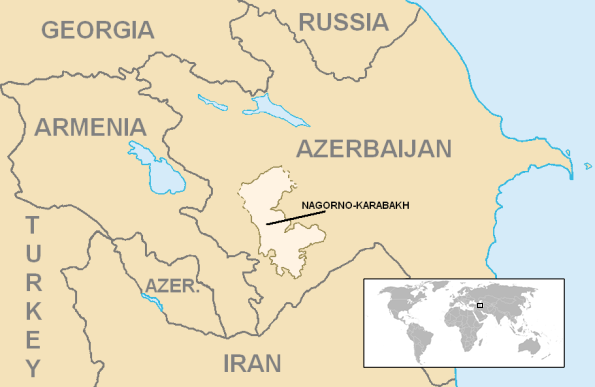A major conflict has erupted in Nagorno-Karabakh, with some of the heaviest fighting between Armenia and Azerbaijan in decades. This fighting may deteriorate into a major international crisis.
Nagorno-Karabakh is a mountainous region in the South Caucuses that is claimed by both Armenia and Azerbaijan.
Following the dissolution of the Soviet Union, Azerbaijan and Armenia fought a devastating war for control of this territory. Tens of thousands of people were killed before a ceasefire was enacted in 1994. The ceasefire resulted in Nagorno-Karabakh being formally recognized as Azerbaijani territory, though its inhabitants, who are are mostly ethnic Armenians, exert de-facto control over the region and have been supported by the government of Armenia.
For decades an international contact group including Russia, the United States and France sought to mediate a peace deal, but to no avail. There have been periodic flareups of conflict over the years, but none as intense as current fighting, which erupted in mid-September. Scores of people have been killed.
This is the most serious crisis in the south caucus region since 1994, and according to my guest today there is little prospect for de-escalation.
Olesya Vartanyan is a senior analyst with the International Crisis Group, working in the South Caucuses. I caught up with her from Tblisi, Georgia. We kick off discussing the history of conflict in this region, before she gives her analysis of why such intense conflict is erupting right now. We also discuss the broader regional and geopolitical implications of this fighting.
We recorded our conversation just a few days after this major escalation in fighting began and so this is obviously a fluid situation. Still, this conversation will give you some useful background and context for understanding events as they unfold.
